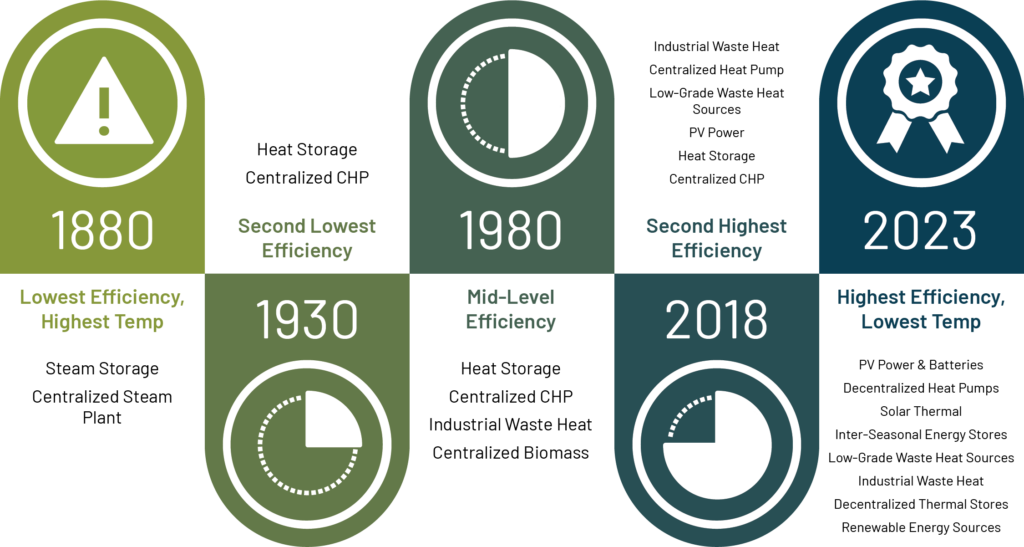- All Posts
- Ecodistricts as a Solution for Decarbonization
Ecodistricts as a Solution for Decarbonization
In a 2022 survey, McKinsey found that while 35% of the U.S. workforce has been offered the opportunity to work remotely full-time, of the remaining 65%, only 23% are offered part-time remote work and 42% are offered none. This total equates to 106 million workers. For those within this population that spend their working hours in commercial buildings, the expectations of comfort and reliability must be met.
While consistent and reliable heating and cooling sounds simple, the requirements to guarantee these are constantly changing and in need of improvement. As technologies and systems are introduced to the market to assist in meeting these needs, the growing strain on building systems is moving faster than many can keep up with.
With these growing needs and more cities and areas moving towards zero-carbon goals, the need to analyze and implement high-performance district heating and cooling systems (EcoDistricts) is becoming more important than ever. Since 2018, district energy networks have been growing into their next phase of efficiency and growth, prioritizing scalability, efficiency, and integration with electrical utilities.
“The era of addressing the ‘low hanging fruit’ of building performance is coming to a close and greater focus is now targeted at scaled and accelerated decarbonization strategies,” said Jason Twill, Principal and National Practice Lead at Viridis Initiative, “district energy offers a flexible platform to increase efficiency, reduce greenhouse gas emissions, and adopt new technologies and fuel sources over time.”

Unlike older district systems, EcoDistricts allow for both heating and cooling to be supplied through the same system and for the sharing of thermal energy between buildings. By utilizing a variety of thermal and renewable energy sources, heating and cooling are provided to buildings through low-temperature energy loops shared by multiple facilities. This means that facilities are getting the right temperatures for their different spaces, whether it be a comfortable temperature for office settings or critical cooling temperatures required by data centers. Additionally, facilities become part of the energy-sharing system by returning ambient heating and cooling that is normally lost back to the loop system, making it more energy efficient.

EcoDistricts leverage smart building technology to deliver energy (heating, cooling, and power) exactly when and where it is needed. This localized, distributed network of heating and cooling nodes can deliver greater energy equity, resilience, improved air quality, all while allowing communities to adapt to changing environmental conditions. In an EcoDistrict, buildings are more than standalone islands. Each is part of a greater ecosystem of energy nodes. These nodes allow for an interactive system to optimize energy use and allow the built environment to work in harmony with the larger electrical grid.
For the team at Viridis Initiative, we want to help our clients understand and implement EcoDistricts for their communities, providing cost savings and energy efficiency, while contributing to the positive difference we are dedicated to making in the built environment. We believe that every step towards a better built environment only benefits the future of those around us and provides a result that we all want to see: a long and healthy life for us and those around us.